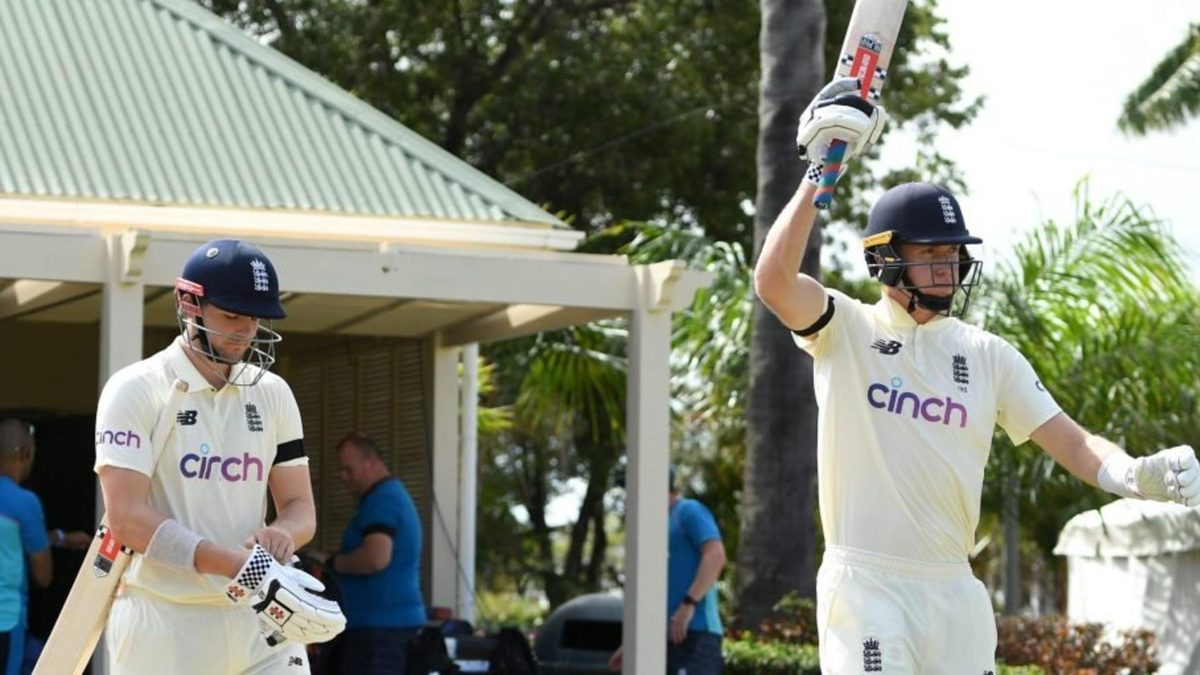
Ahead of England’s Test series in West Indies – their first since their 4-0 drubbing Down Under – Wisden Cricket Monthly editor-in-chief Phil Walker reflects on England’s new-look batting line-up, of whom only two were in the XI at the start of the Ashes earlier this winter.
Somewhere a game of cricket takes place. A clutch of West Indians in island-coloured caps amble through the morning salvos. A Trinidadian called Bryan Charles, conceived a few months after Antigua ’94, rolls his arm over. English sprinklings lounge around the perimeter, sunning up for next week’s first Test. The caretaker boss peers over from the grassy knoll, occasionally stirred by popples of applause. Test bowlers in white socks and sliders look for stray balls in the bushes. Alex Lees leaves well, defends deep and overbalances to the off-side. Zak Crawley, with that extra dash of time that marks the good ones, punches straight, wafts a bit, and clips tidily. The old line that come the end of the world someone, somewhere, will still be playing cricket, has rarely felt so appallingly apt. They lunch at 65-0.
Everyone has a job to do. The English game’s enduring search for a sous chef to replace the original arrives at Alex Lees. He has the physical stature, slightly Pinocchio-like movements and quality-stamped bat sponsor of Cook himself. He also has 65 chiselled runs in a senior England shirt. He played to type, batting as an act of suppression, a study in abstinence only partially self-inflicted. He struggled to time it throughout his 214-ball stay, save for one pointed bunt over the ropes off Bryan Charles – one of those cricketers, like Shikhar Dhawan, fated to be referred to forevermore by his full name.
Southpaw blunter, wavy strokesmith. Optics-wise it works. Lees has got there the hard way, round the backroads of county cricket via Yorkshire, before it turned sour and runless – “It wouldn’t be appropriate to comment,” he told Wisden last month, of the circumstances of his departure – and then to Durham, for whom he averages 40-odd, compiled over the last three seasons in the face of collapsing aggregates elsewhere. Crawley meanwhile, as things stand, exists in a bubble of airy talent, strained mitigation and two unbelievable days in Southampton, punctured only by the cleansing purity of his ball-striking.
Joe Root’s sensible shift to No.3 and his desire to keep Ben Stokes at five frees up a space between them for the rarely-seen Daniel Lawrence, ghosted during the Ashes but now poised to resume his Test experiment. He used the evening session in Antigua to land a few blows and the second morning to reveal a little more. He’s in for next week.
To dwell on the stylings of Lawrence’s technique, not that the basics aren’t fundamentally sound, is to miss the point. He is neither a technician nor a killer. What he does have is genuine self-confidence – he calls it “front” – and a knack for changing the flow of difficult games. He can’t get his head round the notion of getting bogged down and knows he can score off anything, which of course brings its own aggravations. But when he stems the boredom, remembers that he can sit on his bat for a few minutes, and the propulsive imagination doesn’t run off the page, it can be compelling.
At county level, where the game comes too easily, he’s just as likely to flamingo one to deep-square as get trapped on the crease; last summer he averaged 53 in the Championship with barely an ugly run. Sprinkled among them were five Test innings, before he was dropped after an iffy match against India at Trent Bridge (when he was caught down the legside for nought and then leg-before for 25). Overall he could have few complaints, though he might argue he was 20 minutes away from a maiden ton in his second Test knock of the summer, left high and dry on 81 against New Zealand at Edgbaston. Eight Tests into his career, he can already point to at least four knocks that have halted the momentum of a game.
“I need to be thinking about cricket all the time,” he told me just before Australia. “I’m desperate for it. And I know exactly what I’ve got to do.” At no stage has the famous self-belief been under threat. “I know that if I play well I’ll be good enough to score runs in international cricket – and big runs. That’s never left me. Having a taster of it so far, I’ve been able to work out that I need to dedicate literally everything to being the best cricketer I can be.”
At six, Jonny Bairstow, emboldened by a recent Ashes hundred and the absence of the other JB to just bat and be himself. It’s the slot where he’s done much of his best work, the natural position for the counter-puncher who will, at least at this stage in his rehabilitation, be thankful for the velveteen hands of Ben Foakes behind him. Foakes is a stayer by nature, with a back-foot game grounded in the principles of occupation that should in theory offer a useful backstop to those that come before him.
The issues, of course, are legion. Unproven opening pair. The skipper moved by necessity into the devil’s slot. Impressionistic Essex boy at four. Old-world keeper-bat at seven. No one bar Root averaging more than 36.5. But change was demanded, and change is what we’ve got. The top seven that takes the field next week will contain just two names from the line-up that began the Ashes. It feels fresh and interesting, and it makes a kind of sense, not that anything does these days. We’ll take the smallest mercies where we can.








